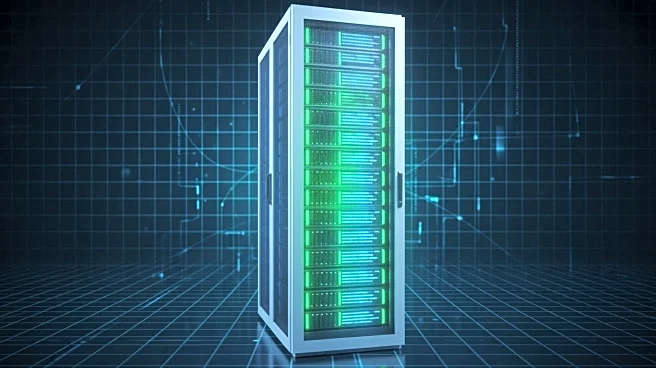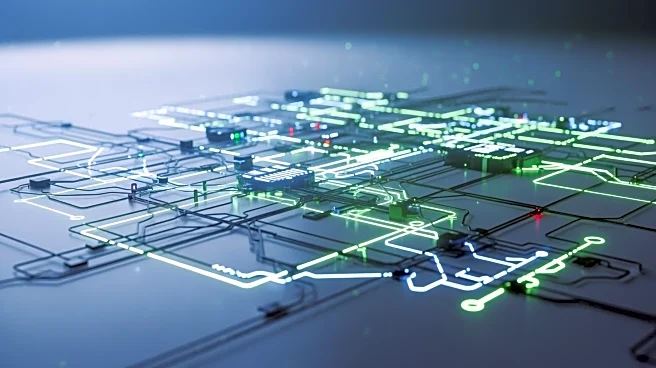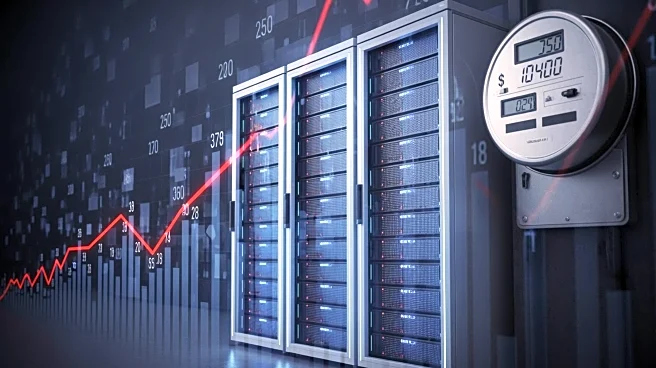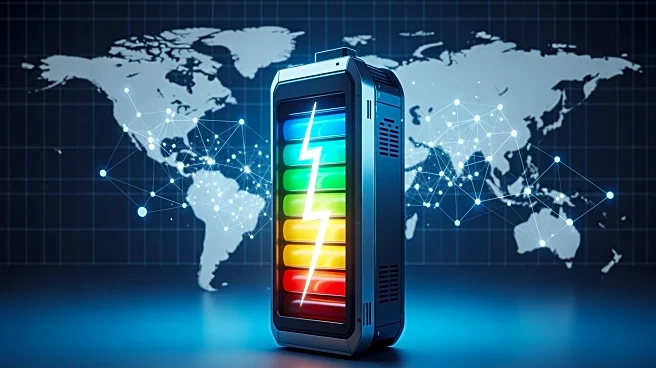What's Happening?
The rise of artificial intelligence (AI) is significantly transforming the U.S. energy grid, driven by the increasing power demands of AI data centers. These facilities, which once required around 30 MW, now regularly need between 100 to 200 MW, with
some designed to consume up to several gigawatts. This rapid growth poses challenges for utilities, regulators, and policymakers as they strive to meet the energy needs of these centers while maintaining reliability and affordability. The Electric Power Research Institute projects that U.S. data center electricity demand could grow annually by 3.7% to 15% until 2030, highlighting the uncertainty in energy demand. To address these challenges, energy markets are adopting mechanisms to balance load and supply, and the grid is evolving with investments in advanced transmission conductors, grid-enhancing technologies, and AI-driven applications.
Why It's Important?
The transformation of the energy grid due to AI data centers has significant implications for U.S. technological leadership and economic growth. As AI becomes integral to various sectors, including defense, finance, and healthcare, ensuring a reliable energy supply is crucial for national security and competitiveness. Large AI data centers must pay a fair share for infrastructure investments to avoid burdening local communities. The siting of data centers in areas with robust power infrastructure can alleviate pressure on urban grids. However, the interconnection process remains a bottleneck, requiring reforms to streamline transmission and substation upgrades. Securing the grid against cyber threats and ensuring a resilient domestic supply chain are essential to support AI-driven growth.
What's Next?
Future steps involve continued investment in grid modernization and workforce development to meet AI-driven energy demands. Expanding education and training pipelines for electrical engineers and skilled trades is crucial to address workforce shortages. Innovation in business models, such as performance-based regulation and subscription-style tariffs, can provide utilities with flexible tools to serve large data centers. The U.S. must also invest in R&D, strengthen domestic supply chains, and foster public-private partnerships to stay ahead of global competition, particularly from China, which is aggressively scaling its AI and grid infrastructure.
Beyond the Headlines
The ethical and security dimensions of AI's impact on the energy grid are significant. As AI becomes more integrated into critical sectors, securing both physical and digital infrastructure is vital to prevent espionage and sabotage. The shift from diesel backups to cleaner energy options, such as natural gas plants and hybrid solar-wind-battery systems, reflects a broader move towards sustainability and resilience. Ensuring equitable access to energy resources and preventing disproportionate impacts on local communities are ongoing challenges that require careful policy consideration.














